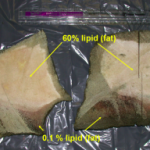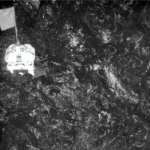
Knowing my fascination with body size variation among organisms , Peter sent a link along for a new paper, “Why don’t all whales have cancer? A novel hypothesis resolving Peto’s paradox.” Included in the email was a gentle prodding to post on this unique paper.
 Peto’s paradox is that cancer is fundamentally different across mammals. If all mammalian cells have an equal probability of developing a mutation leading to cancer, all else being equal, then larger sized organisms with more cells should have a higher incidence of cancer. Equally, because larger organisms are longer lived then the probability also increases for any one cell to develop a, onogenic mutation. However, published literature reviews find no correlation between cancer incidence and body size.
Peto’s paradox is that cancer is fundamentally different across mammals. If all mammalian cells have an equal probability of developing a mutation leading to cancer, all else being equal, then larger sized organisms with more cells should have a higher incidence of cancer. Equally, because larger organisms are longer lived then the probability also increases for any one cell to develop a, onogenic mutation. However, published literature reviews find no correlation between cancer incidence and body size.
This relationship should be easily seen given the tremendous size range of mammals from the bumblebee bat at mere 2g to a blue whale at 190,000 kg. For example, cancer among wild animals (<5%) is typically far below the percentage for humans (20-30%) irrespective of body size. Percentages in wild animals can approach 80% as in the Tasmanian devil or woodchucks but have very specific causes. In the later case of woodchucks, cancer is connected to a hepatitis virus. For cetaceans, and especially baleen whales, both large and long lived, we expect the incidence of cancer to be high. Cancer rates are high in belugas in the St. Lawrence estuary but related to agricultural and industrial pollution. However, belugas represent a rare case in cetaceans, with one study documenting only 33 cases before 2002. So what accounts for this paradox? One potential reason is that we have undersampled individuals with cancer. This is not likely if we assume that all mammalian cells, despite the organism, are likely to become cancerous. If we assume a reasonable 2% carcinogenic risk and just account for differences in size and not lifespan, then conservatively a whale has
chance of having a cancer free life. If poachers didn’t kill them first, 96% of elephants would also have cancer.
So what accounts for Peto’s paradox?

And no this doesn’t provide justification for you cramming your pie-hole with more…um…pie.




